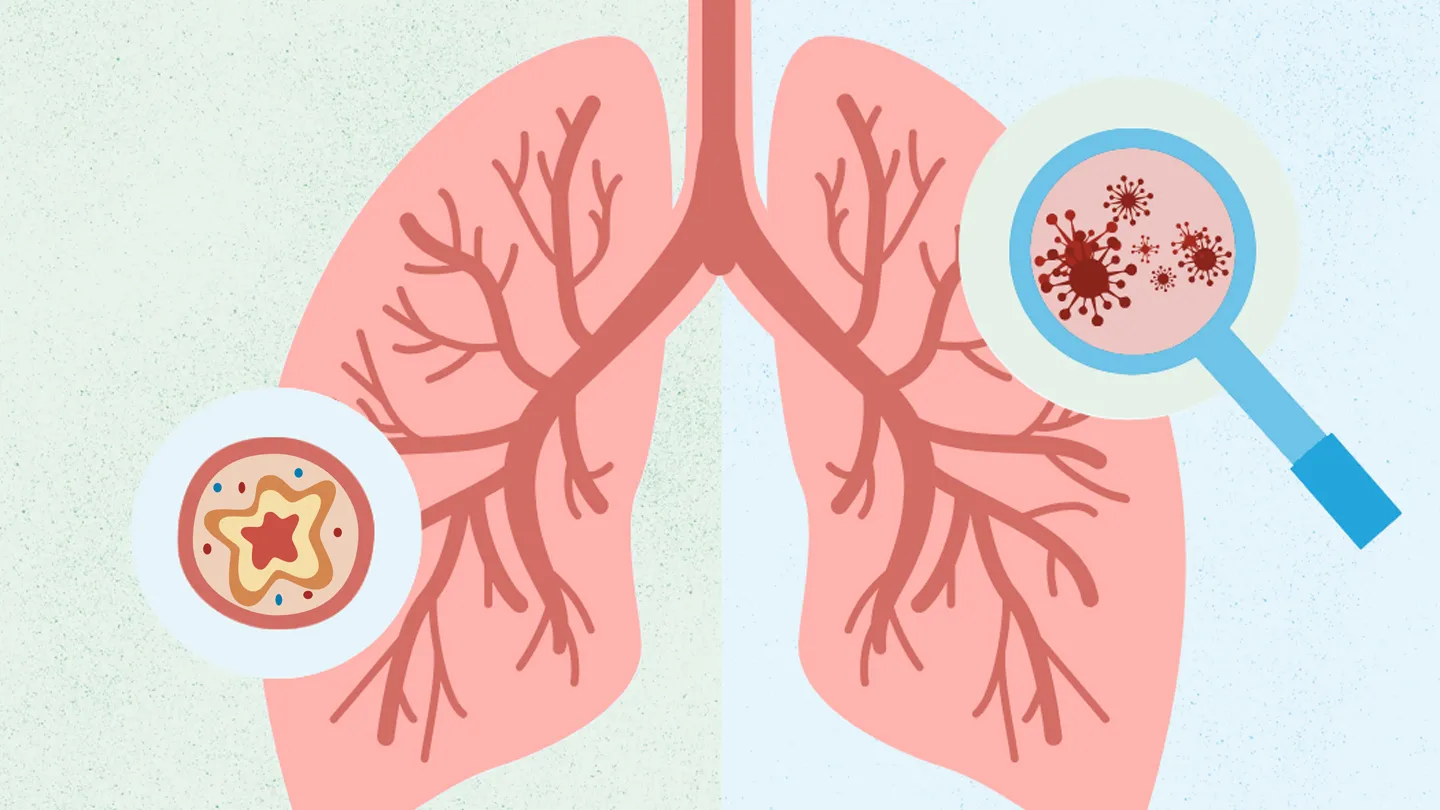
Both conditions can cause coughing that lingers longer than expected. The cough may start dry. Over time, it becomes wet or rattling. Some describe chest discomfort. Others feel tightness or heaviness when breathing. In many cases, the difference between bronchitis and pneumonia starts with the depth of infection. One stays in the airways. The other moves deeper into the lungs. Still, the early symptoms often mirror each other closely.
Bronchitis usually develops after a cold or viral infection
Bronchitis usually develops after a cold or viral infection. The upper airways swell and fill with mucus. This swelling irritates the bronchial tubes. Coughing begins as a way to clear them. The body tries to push out what doesn’t belong. It’s often not dangerous, but it is persistent. Most cases improve without antibiotics. However, the cough may linger for weeks, especially in dry or polluted air.
Pneumonia involves the lung tissue filling with fluid or pus
Pneumonia involves the lung tissue filling with fluid or pus. The infection reaches the alveoli. These tiny air sacs are responsible for gas exchange. When they fill, oxygen movement slows. Breathing becomes shallow or rapid. Fever tends to spike higher than with bronchitis. Chills and sweating may follow. Unlike bronchitis, pneumonia often brings visible fatigue. Movement becomes tiring. Rest no longer feels refreshing. Something deeper is clearly disrupted.
People with bronchitis can usually breathe more comfortably than those with pneumonia
The feeling of breathlessness varies. People with bronchitis can usually breathe more comfortably than those with pneumonia. They may wheeze or cough but can walk without gasping. In pneumonia, shortness of breath often appears quickly. Simple tasks become difficult. The chest may feel heavy. Air seems insufficient even at rest. This difference in breath quality often marks the shift from surface inflammation to deeper infection.
A mild fever may occur with bronchitis, but pneumonia tends to raise it significantly
Body temperature gives another clue. A mild fever may occur with bronchitis, but pneumonia tends to raise it significantly. People with pneumonia often feel flushed or chilled. The temperature rises quickly, sometimes without clear cause. Sweating can follow. This intense reaction reflects the body’s deeper immune battle. In bronchitis, the fever is usually lower. It fades faster. Fever intensity is not a diagnosis, but it adds to the picture.
Pneumonia can sometimes produce colored or blood-tinged mucus
The color of mucus matters. Pneumonia can sometimes produce colored or blood-tinged mucus. Bronchitis may do the same, but it usually stays yellow or clear. A rusty or red-tinged sputum raises concern. It suggests damage in deeper lung tissue. Coughing becomes painful. The throat may feel raw. Yet not all pneumonia patients show these signs. Some, especially the elderly, have dry coughs and subtle symptoms.
In bronchitis, fatigue builds slowly, but pneumonia can drain strength within hours
Tiredness is common in both conditions. In bronchitis, fatigue builds slowly, but pneumonia can drain strength within hours. One morning feels normal. By evening, exhaustion sets in. Muscles ache. Sitting upright takes effort. Naps offer no relief. This kind of sudden weakness often marks pneumonia’s grip. Bronchitis, while tiring, allows daily activity. The difference lies in the body’s systemic response to infection.
Listening with a stethoscope may reveal crackles in pneumonia and wheezing in bronchitis
Doctors listen closely. Listening with a stethoscope may reveal crackles in pneumonia and wheezing in bronchitis. Crackles come from fluid inside the lungs. Wheezing results from narrowed airways. Both are concerning. However, the sound’s quality offers important information. One points to airway inflammation. The other suggests deeper involvement. Neither sound guarantees a diagnosis, but both push physicians to ask better questions.
X-rays are more useful in diagnosing pneumonia than bronchitis
Imaging often clears confusion. X-rays are more useful in diagnosing pneumonia than bronchitis. Pneumonia shows shadows or patches in the lung fields. These spots reveal fluid buildup or tissue changes. Bronchitis often looks normal. Its inflammation doesn’t reach the alveoli. So nothing shows. This difference in visibility explains why some cases remain unconfirmed. The image speaks when symptoms blur.
Pneumonia is more likely to require antibiotics or hospitalization
Treatment varies. Pneumonia is more likely to require antibiotics or hospitalization. Bronchitis often resolves with fluids and rest. Sometimes inhalers help open airways. Antibiotics rarely help unless bacteria are present. In pneumonia, however, bacterial involvement is common. Delay in treatment can worsen symptoms quickly. That’s why early medical attention is crucial. Guesswork isn’t enough when lungs begin to fail.
People with weakened immune systems face higher risk with pneumonia than bronchitis
Risk increases with age and illness. People with weakened immune systems face higher risk with pneumonia than bronchitis. Chronic diseases also raise susceptibility. Diabetes, asthma, and heart conditions add strain. In these cases, even mild pneumonia becomes dangerous. Monitoring becomes critical. A low fever or mild cough can mask serious trouble. Immune suppression often hides the usual signs. That’s why subtle symptoms must not be ignored.
Recovery from pneumonia often takes longer and needs more follow-up
Healing doesn’t always follow the same path. Recovery from pneumonia often takes longer and needs more follow-up. Bronchitis, once cleared, rarely returns in the same season. But pneumonia may linger. Fatigue persists. Lungs feel weaker. Follow-up X-rays may be required. Doctors watch for relapse. The infection can return, especially in colder months. Patients must rebuild strength gradually. Pneumonia doesn’t always end when the fever drops.